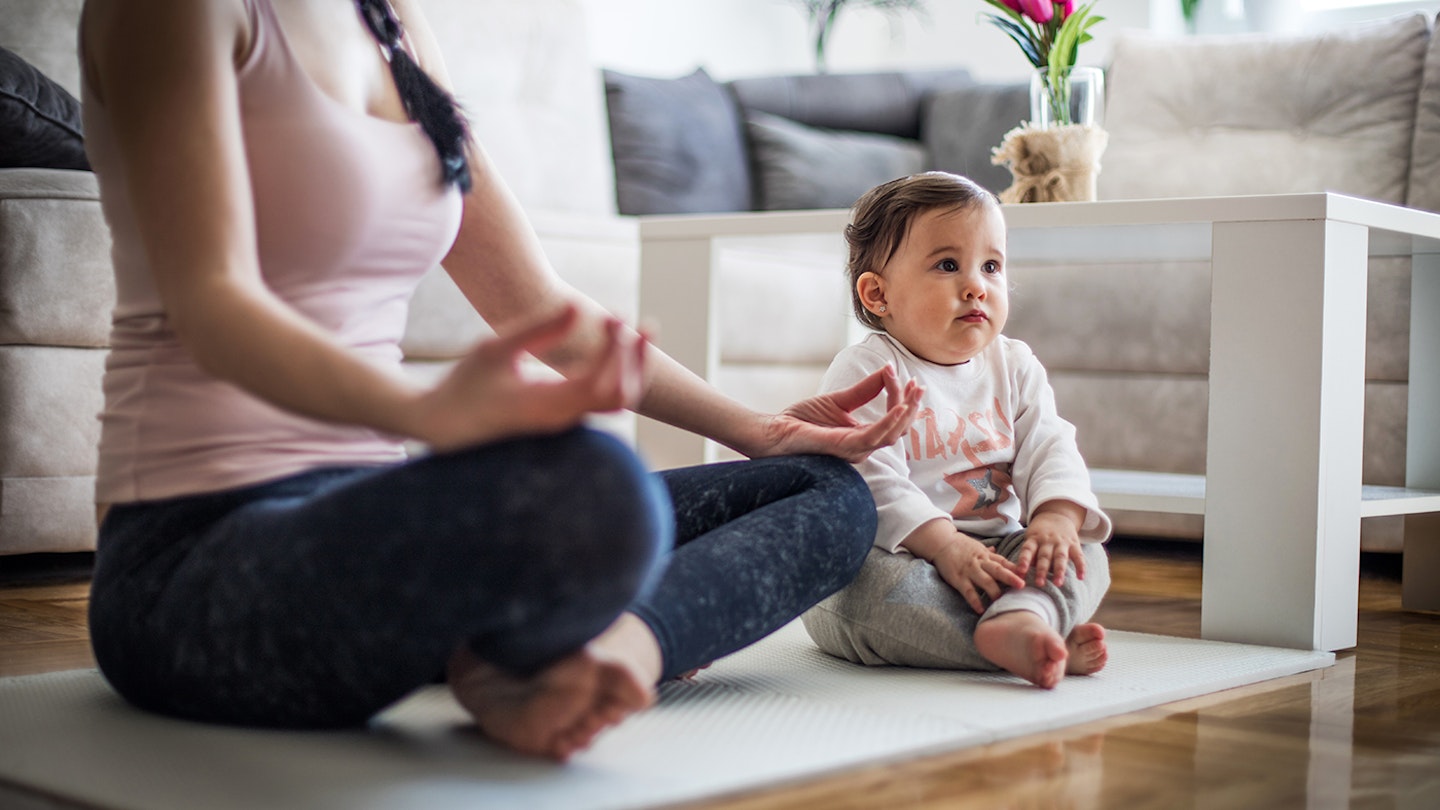Not only is pregnancy yoga great for preparing your body for birth (and your pelvic floor), but there are lots of benefits for your little one too. It's best done as lessons (though there are some moves you can do at home if you feel safe and confident enough to) and is a great way to spend quality time together. It can help to strengthen your bond, as well as your body and muscles. So, we've put together this guide to baby yoga with the help of an expert.
Sam Petter, baby yoga expert, creator and founder of Children Inspired By Yoga, shares everything you need to know about this zen exercise, including the age suitability, benefits and popular moves.
What is baby yoga?
Baby yoga is about giving your baby the opportunity to reach out, stretch and explore life with every limb while following some gentle yoga moves. Crucially though, this form of yoga also involves relaxation, letting your baby know what it feels like to be quiet and still. This range of experiences can help your baby on both an emotional and physical level.
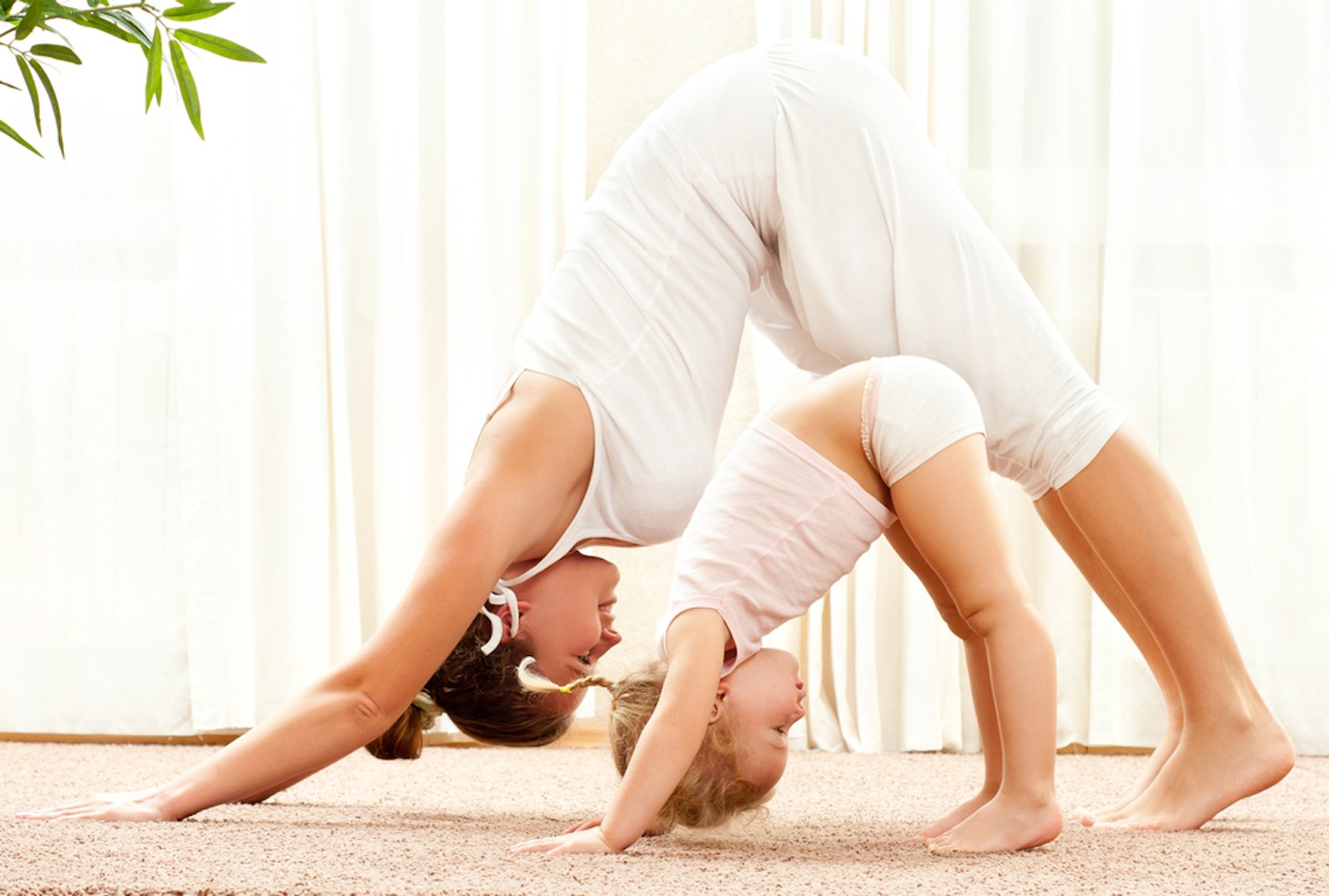
Age suitability for baby yoga
The best time to start is after your baby is 6 weeks old, once you have had your check and your baby has better neck control, to keep them safe. Always look at your little one to check their reaction and to ensure you are doing things they enjoy - it is all about really simple yoga stretches, not complex moves. If you have any concerns at all then consult your health visitor or GP.
The benefits of baby yoga
Baby yoga mixes physical touch with emotional contact and movement. The meaningful touch and play used in baby yoga gently encourages your little ones to enjoy and explore their newfound skills as they start to progress and move in different ways.
It’s also a great way to bond with your baby. Again, the meaningful touch and play helps with this process. One of the main frustrations of being a new parent is that, in the beginning, there can be a lot of things you don’t understand about communicating with your baby because you are still getting to know each other. By doing baby yoga you will learn some really useful techniques to help you ‘have a conversation' with your baby and communicate.
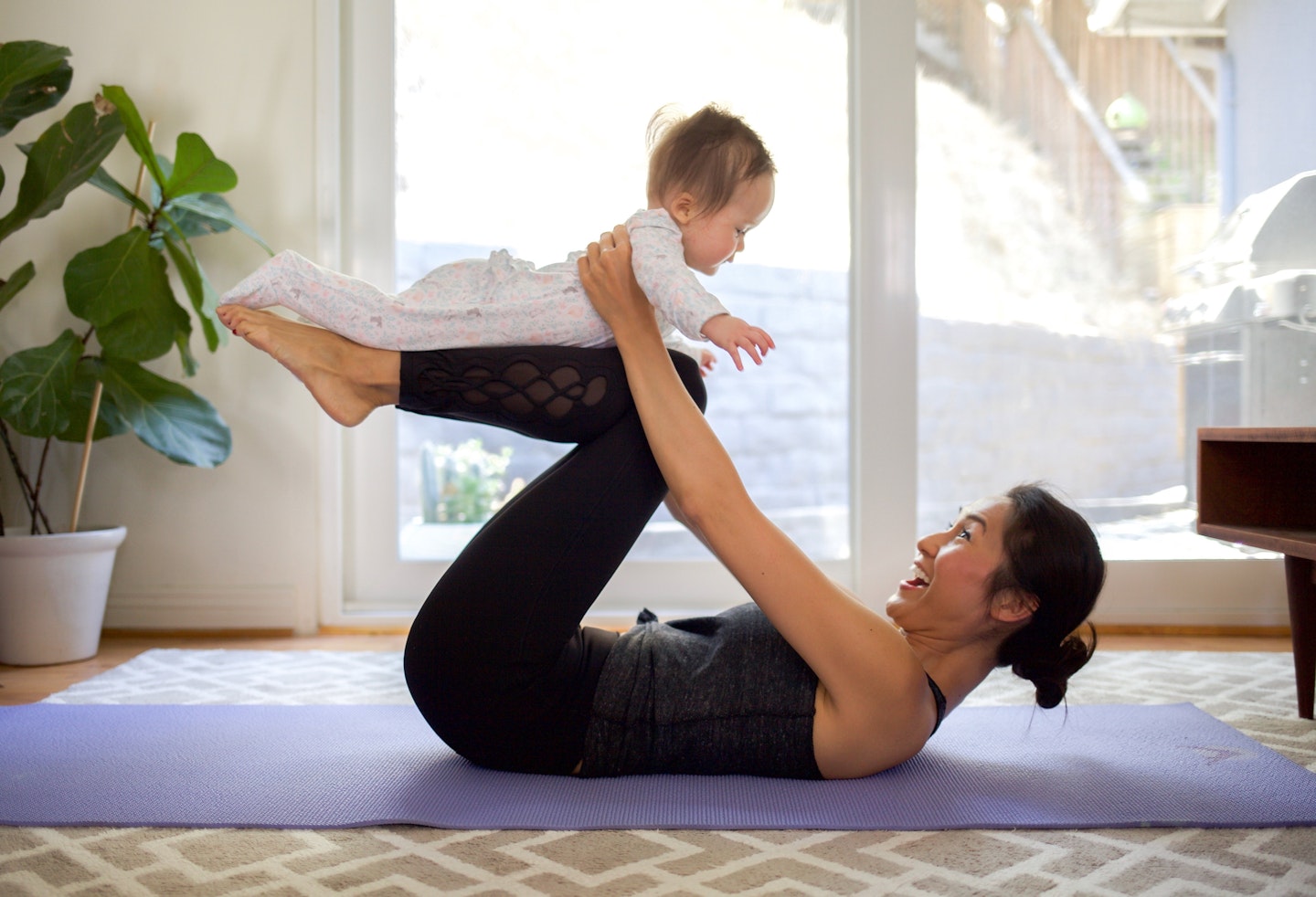
Babies who do yoga are also often more advanced when it comes to crawling and walking. ‘Yoga helps a baby find his centre of gravity and increases his awareness of his own body and limits,’ says Amy Thorley, director of Hands on Babies. ‘Many of the moves are things a baby does naturally, but yoga encourages him to bear weight on his arms and legs.’ The thinking is that by locating his centre of gravity, your baby will be steadier on his feet when he learns to walk.
Another use of baby yoga is to ease colic – intense, uncontrollable crying that some think is linked to digestive problems. ‘Yoga can help by stimulating the circulatory, digestive, hormonal and immune systems,’ says Amy. ‘It releases tension and the way that pressure is applied to the abdomen is closely linked to baby massage, which can help with digestive discomfort.’
Finding a class near you
Doing a quick Google search will bring up plenty of classes nearby. You can also search for classes via the National Childbirth Trust website using their postcode tool.
Another great way to search for classes is through The Little Sensory Co.
How much does it cost?
The cost of a class will vary depending on your location and the type of class, but generally they're in the region between £5 - £10.
Things to consider before starting
If your little one has any specific physical conditions such as ‘clicky’ hips, reflux or congenital disorders do consult your health visitor or GP before trying baby yoga.
When your baby is teething or if they have recently had injections, be aware that they may be extra sensitive. In some instances baby yoga can be a good distraction for your baby, helping them to cope with these experiences. However, some babies may not enjoy doing baby yoga at this time. Your baby will make it clear if they are not enjoying it so always be aware and in tune with the signals they are giving off and react accordingly.
What to wear to baby yoga
Parents should wear their usual yoga or gym wear. Comfort is essential as you will be moving around and increasing your blood flow. It's likely that your heart rate will go up, so bring removable layers in case you get too hot. You may want to remove your babies clothes before the class starts and put them in a vest and well-fitting, non-restrictive nappy to avoid any accidents.
What to bring to baby yoga
The most important yoga accessory to bring with you is a yoga mat, as performing these moves on a hard surface could cause pain to you and your your little one. You will ned a drink for both of you as you are likely to get thirsty during the session.
It's also a good idea to bring a towel or blanket from home that your baby uses regularly, as they may help them to feel more comfortable in new surroundings. Don't forget to bring your baby bag and any essentials such as nappies or bottles and a change of clothes.
Baby yoga top tips
• Do your baby yoga routine when your baby appears active and is showing you they want to play and move.
• Do not do baby yoga if your baby is tired, hungry or has just been fed. Remember baby yoga is only beneficial for your baby if they are feeling happy and comfortable.
• Keep good eye contact with your baby as you do the moves. Really ‘tune in’ to your baby. If you do this you can respond quickly to baby’s cues and check they are still enjoying themselves.
• Never force the movements. If your baby is under five months they will have less range of movement at their shoulders, elbows, hips and knees compared with an older baby. Younger babies rely on this natural tightness to move, so it is important not to disrupt this.
• Remember to show your baby how proud you are of their new skills - smile!
• Ensure that your little one is wearing a well-fitting nappy such as Pampers Active Fit. This type of nappy will adapt to your baby’s movements because it has stretchier sides than ordinary nappies to help to keep your baby dry and protected no matter how much they move.
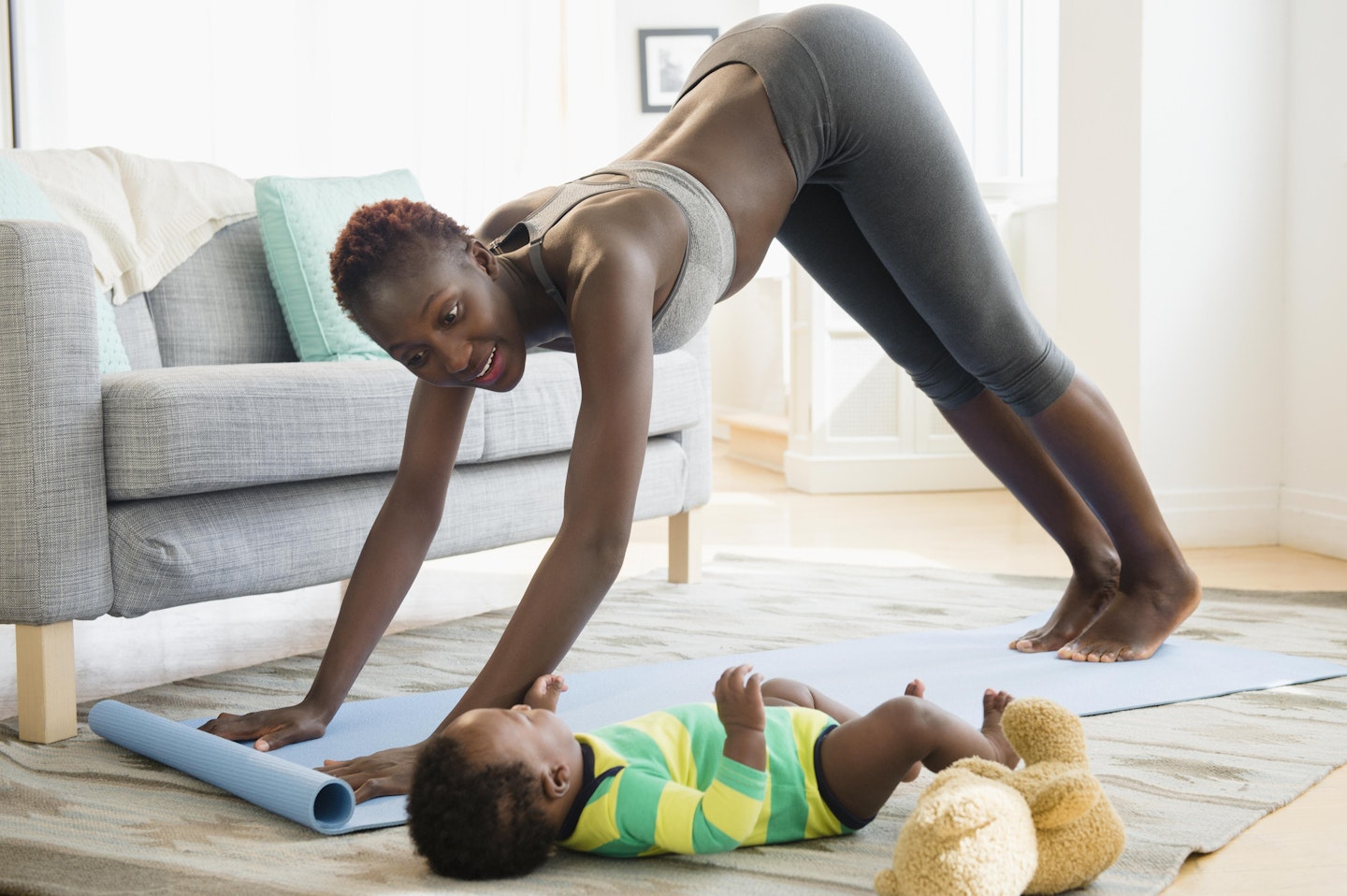
Baby yoga moves to try at home
Baby yoga moves
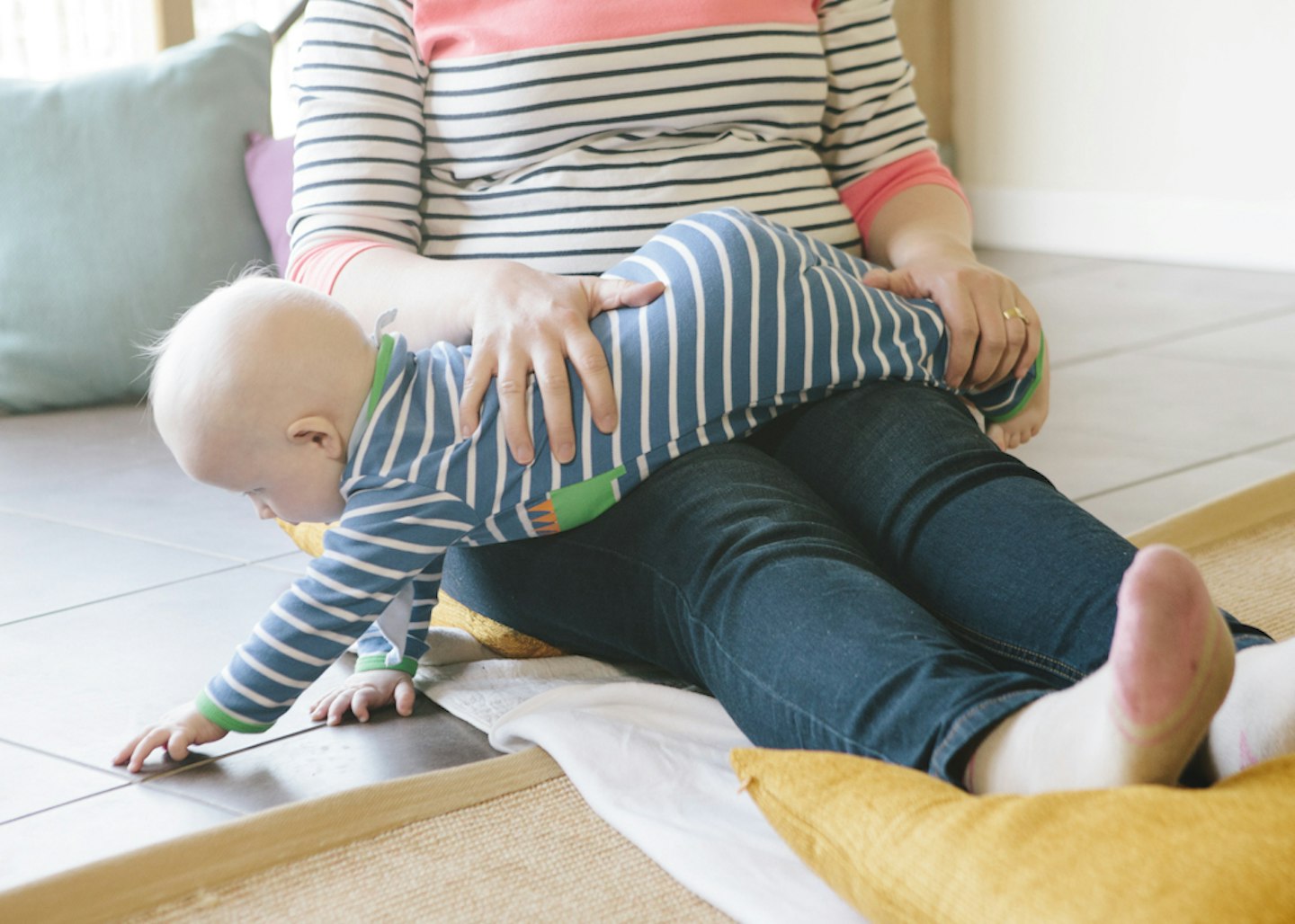 1 of 6
1 of 6The Cat-Dog
This move is sort of a hybrid between the downward dog and the cow-cat pose and will help your baby develop strength in their upper body. Simply lay your baby's body over your legs with their arms hanging over one side and encourage them to push themselves up.
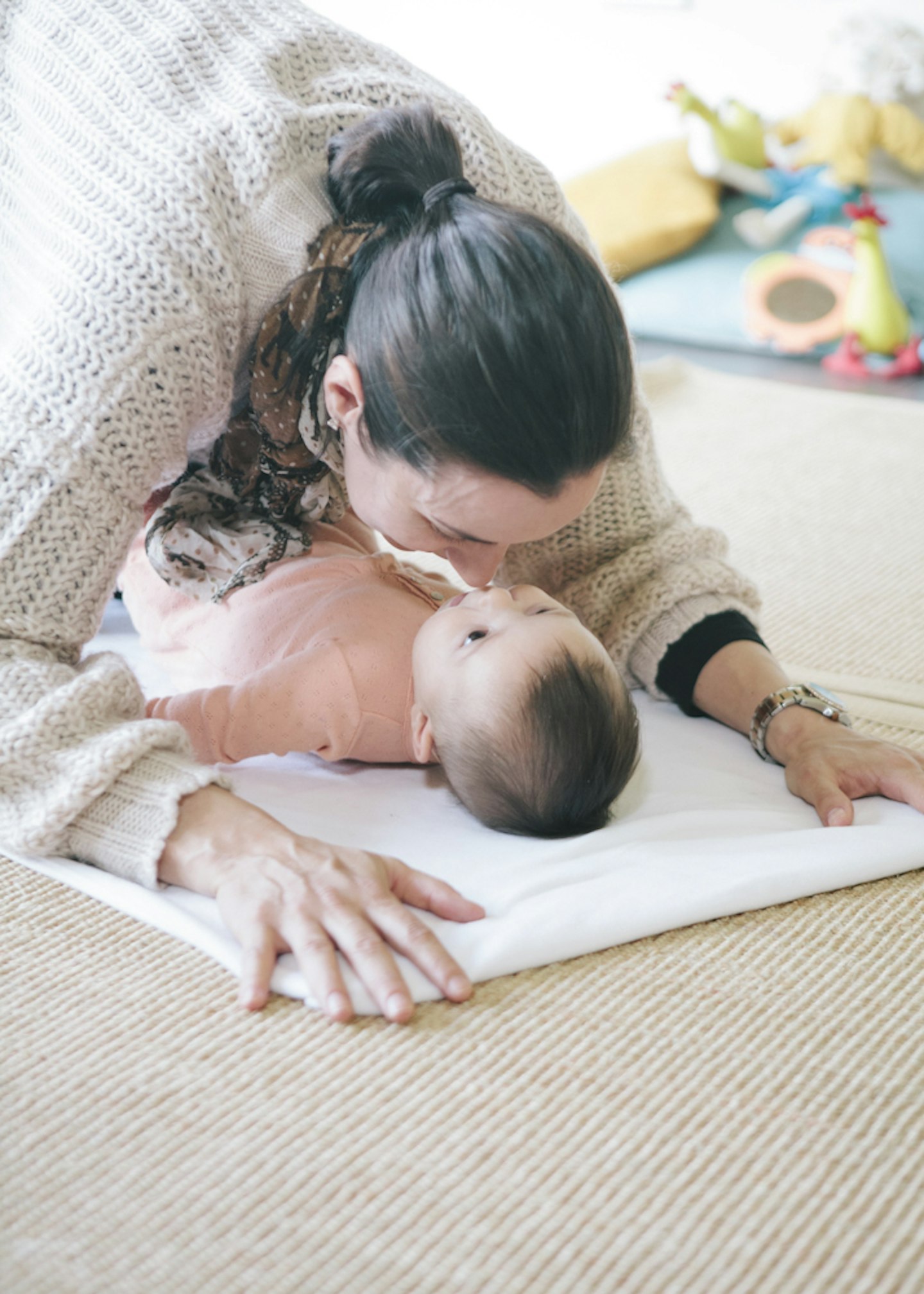 2 of 6
2 of 6The Bee
Bend over your baby and gently lift up their arm or leg to ‘hum’ softly on their hand or foot. Your baby should be able to feel the vibrations of your ‘hum.' If your baby enjoys this sense of vibration, try gently ‘humming’ on their tummy, chest and maybe their forehead.
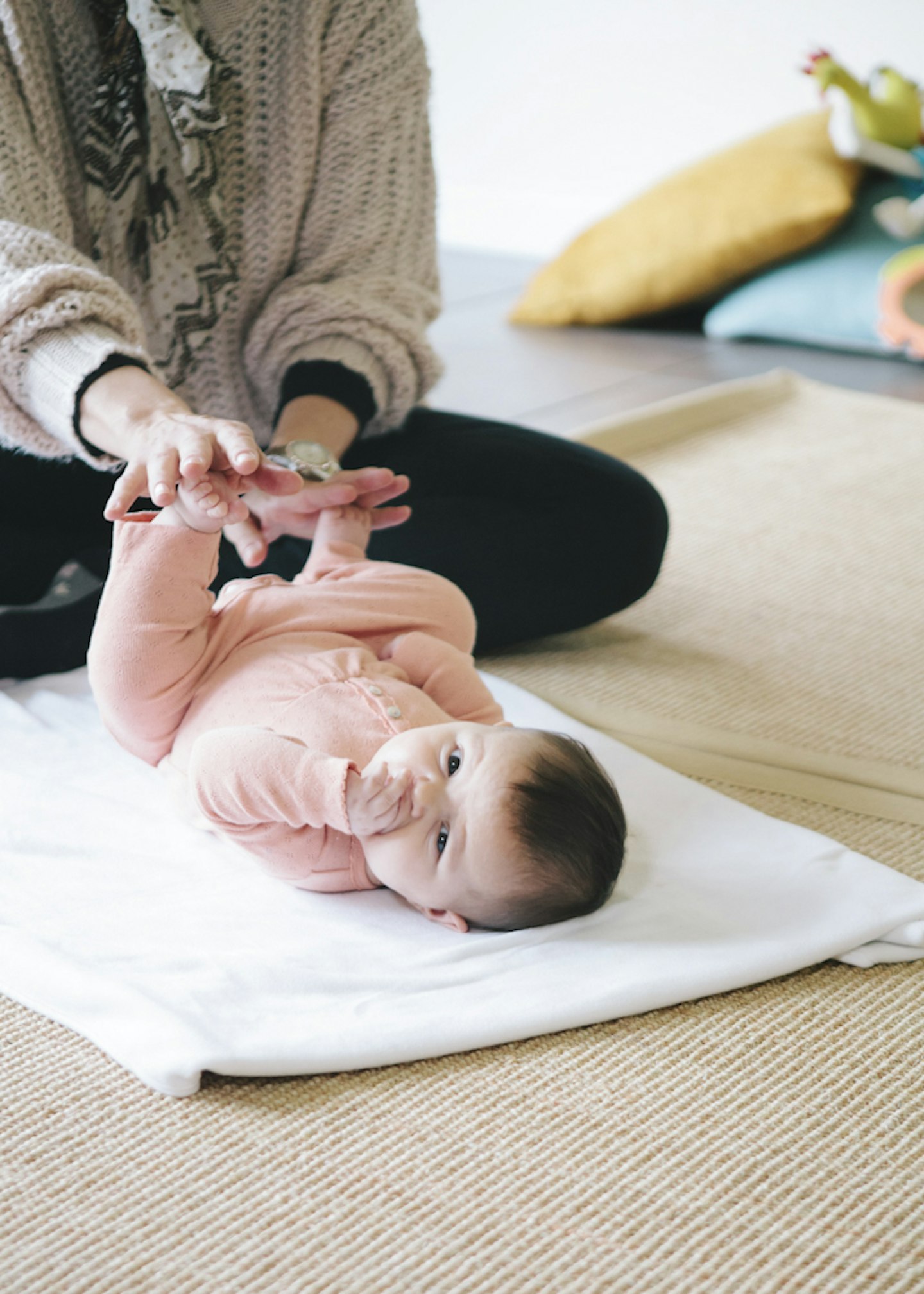 3 of 6
3 of 6Cycling
Put your baby on his back and cycle his legs in the air gently.
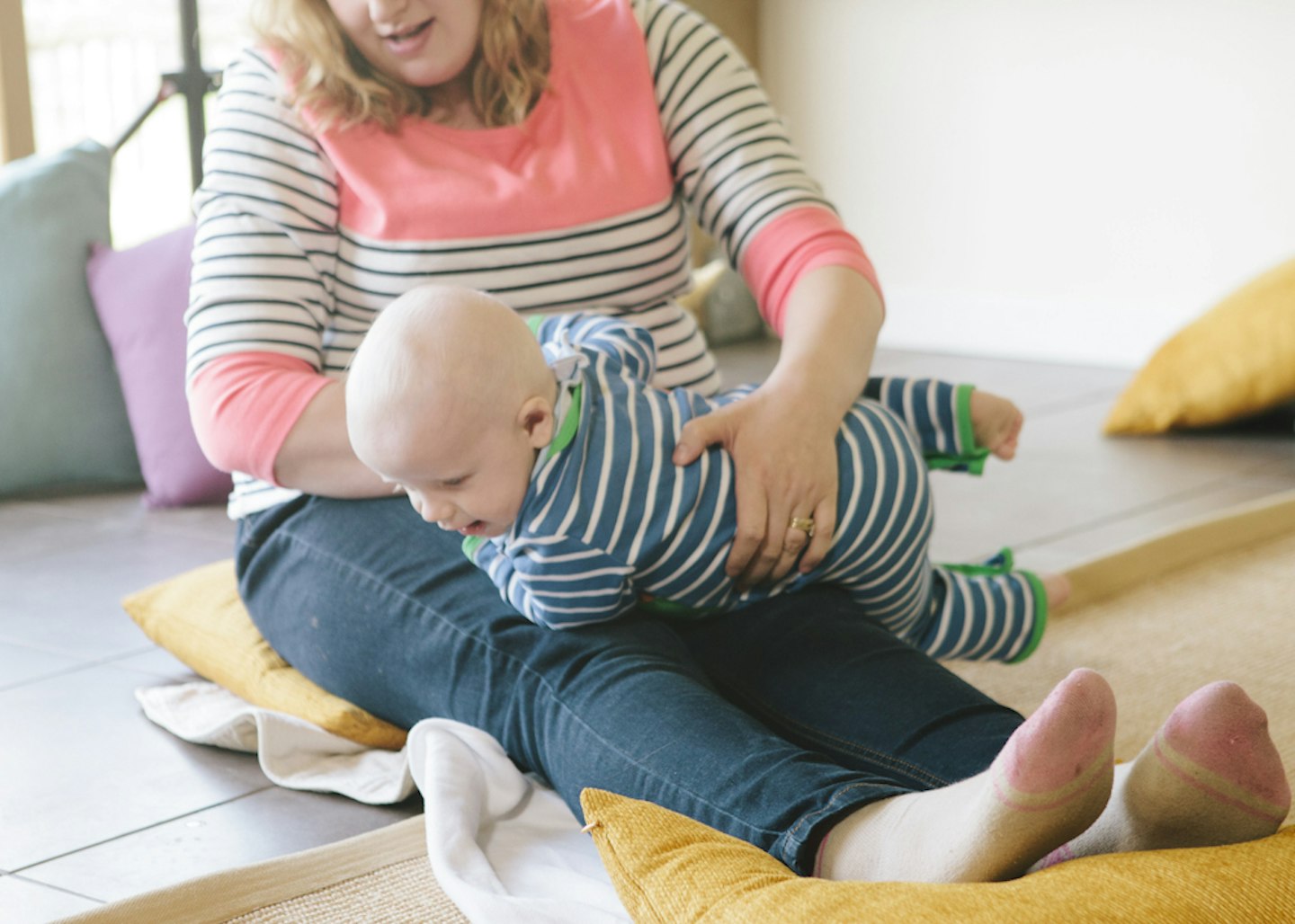 4 of 6
4 of 6The Fish
Stretch out your legs out in front of you then guide your child to lie across your thighs. Encourage him to keep his arms by his sides. Start the pose by rocking your child gently side to side. If and whe you both feel comfortable, gently guide your child to roll down your legs and back towards to you. Support and guide your child at their hips and shoulders as they roll.
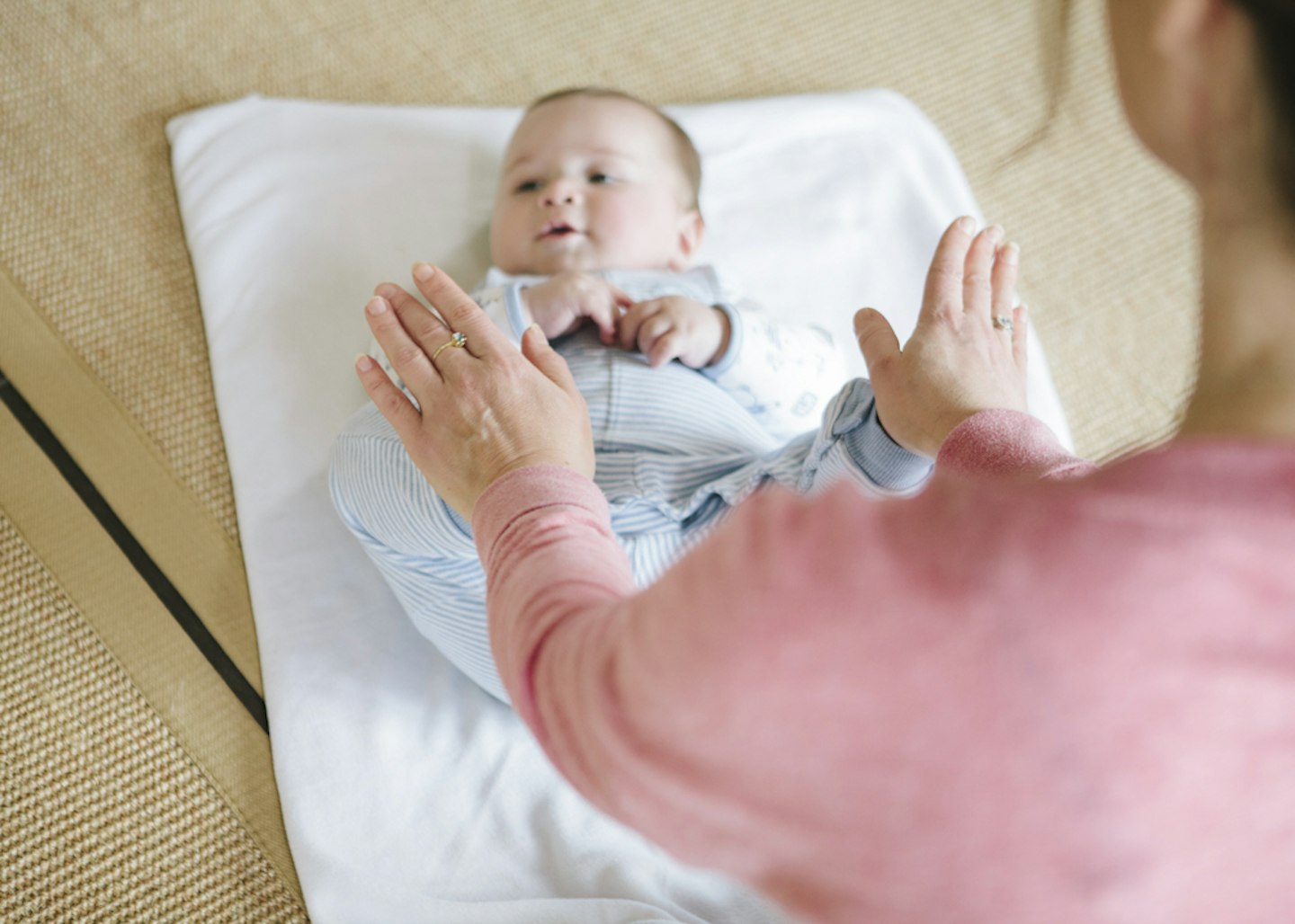 5 of 6
5 of 6The Rabbit
Think of how a rabbits back legs bend before they hop. Now gently and slowly bend your baby's knees back to mimic this action so that their knees are heading towards their chest. This is a great one for baby's suffering from colic.
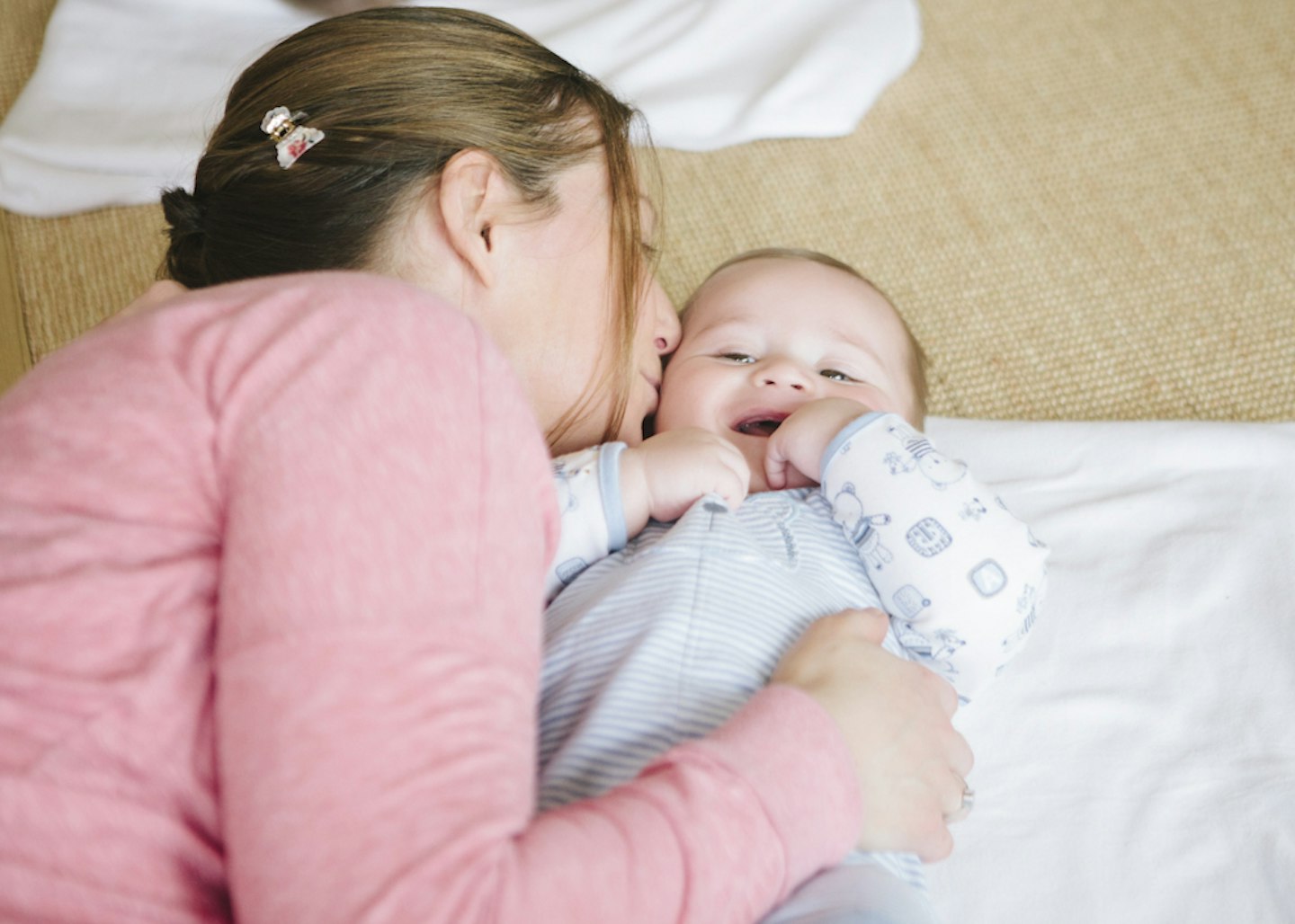 6 of 6
6 of 6Time to relax!
At the end of every yoga session, make sure you and your baby take some time to rest and relax.
Meet the expert
Sam Petter is the creator and founder of Children Inspired by Yoga who run Baby Bumpkin classes for 0-2 years, as well as classes for slightly older kids, all the way up to teens. Sam is a yoga teacher with 17 years teaching experience, and an elite masters swimmer, taking time to compete in World and European Championships.
Mother of two children, Sam is a visionary leader with a passion for creativity, yoga and freedom of mind body and spirit in childhood.
In 2018 she won Kent (Maidstone) business woman of the year. Sam started Tatty Bumpkin in 2004 wanting to combine a holistic approach to children’s development with the playfulness & creativity of childhood.
